Before smartphones and GPS navigation transformed our driving experiences, road trips were exercises in preparation and patience. Every family had their own collection of essentials tucked into glove compartments, under seats, and packed in trunks “just in case.” These items weren’t just conveniences—they were survival tools, entertainment systems, and the foundation of family memories. Looking back at these road trip staples reveals not just nostalgia, but a time when self-reliance meant carrying everything you might need because help wasn’t just a cell phone call away.
1. Paper Maps and Road Atlases
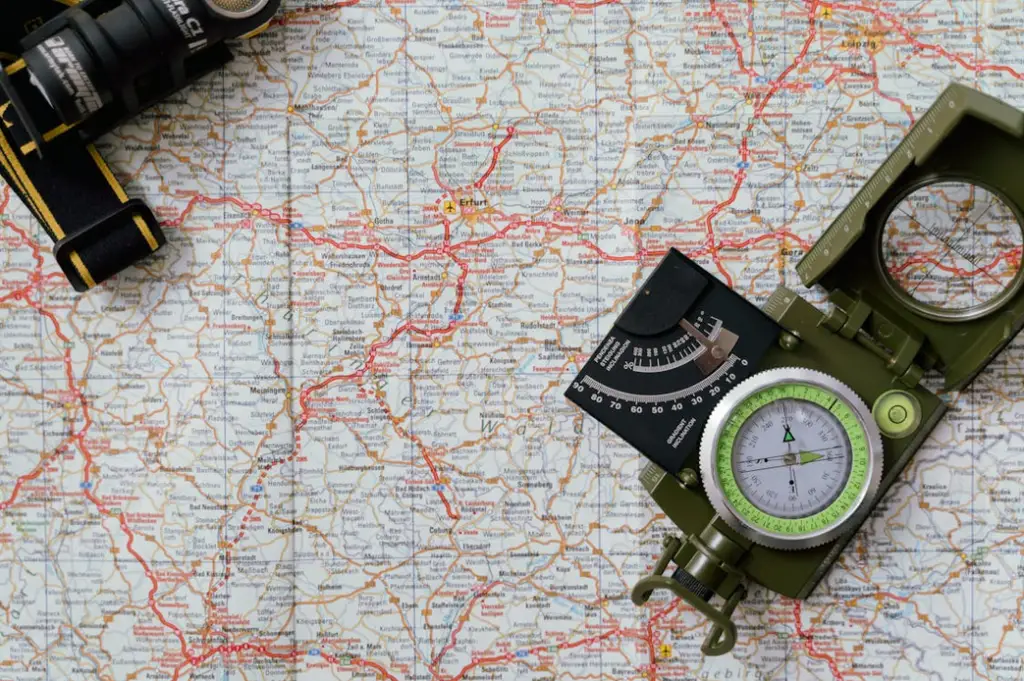
The massive, impossible-to-refold gas station map was perhaps the most iconic road trip essential, crammed into glove compartments and consulted at rest stops across America. Families would plan routes with highlighters, measuring distances with thumbs and arguing about whether to take the scenic route or the fastest path to grandmother’s house. The Rand McNally Road Atlas was practically a sacred text for serious travelers, its dog-eared pages bearing witness to family adventures from coast to coast. To this day, PBS promotes the idea of teaching children to not only read but also draw maps.
For children, these maps were windows into geography lessons, learning to interpret the colored lines and symbols that connected their small world to distant, exciting destinations. Parents would assign navigator duties to keep restless kids engaged, teaching them to find the next town, calculate miles, or locate the nearest place to stop for lunch. When inevitably lost despite these careful preparations, pulling over to unfold a map across the steering wheel became a family ritual—a moment of collective problem-solving before GPS voices began telling us exactly where to turn.
2. Emergency Kit with Flashlight and Batteries
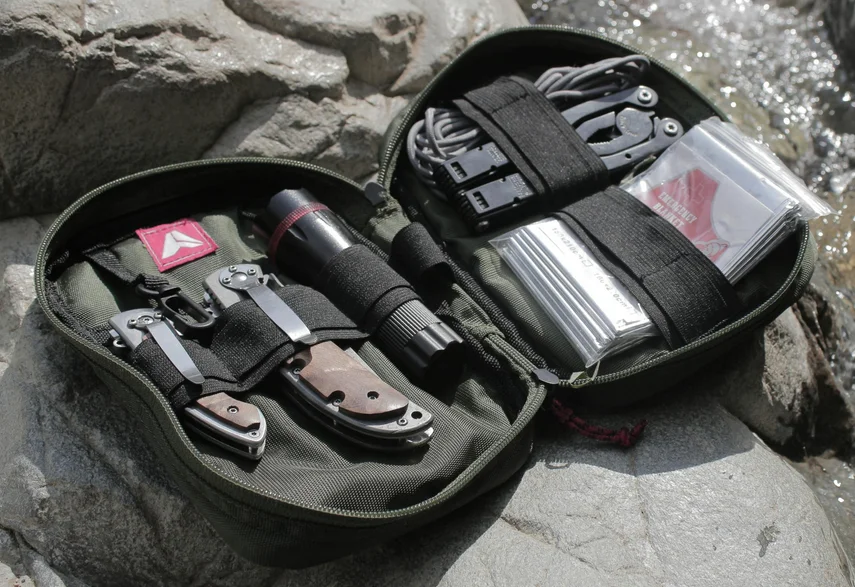
Every sensible driver kept a flashlight rolling around somewhere in the car, typically with batteries just weak enough to cast a disappointing yellow glow when actually needed. These weren’t just for emergencies—they served as reading lights for passengers, tools for finding items dropped under seats, and beacons when setting up tents after arriving at campgrounds later than planned. The ritual of checking and replacing batteries before long trips was a crucial part of preparation, often remembered only after the sun had already set. The American Red Cross has a list of some essentials to consider having on hand.
Alongside the flashlight, many emergency kits included flares, jumper cables, basic tools, and first aid supplies that parents hoped they’d never need to use. These kits represented a practical philosophy that crossing state lines meant entering territory where self-sufficiency might be required at any moment. The comforting weight of these preparations created a sense of security, even if most trips passed without incident more serious than a burned-out headlight or minor scrape requiring a Band-Aid.
3. Thermoses of Coffee and Jugs of Water

The stainless steel thermos, often bearing dents from years of service, kept parents fueled for long stretches of highway driving when 24-hour convenience stores were few and far between. These thermoses were engineering marvels, somehow keeping coffee scalding hot for hours, ready to refill mugs at scenic overlooks or during early morning departures to “beat the traffic.” The distinctive sound of coffee sloshing inside became background music to dawn departures, a promise of alertness for the adult at the wheel. World Travel Protection emphasizes the importance of proper hydration on a person’s physical and mental health.
Water jugs were equally essential, especially when crossing desert states or driving older cars prone to overheating on mountain passes. These weren’t the disposable plastic bottles of today but sturdy gallon containers, often repurposed milk jugs, that served for drinking, emergency radiator refills, or impromptu cleanups of carsickness incidents. Parents would remind children to “take a sip” at regular intervals, understanding that hydration prevented both health emergencies and excessive bathroom stops—the delicate balance of road trip fluid management.
4. Snack Bag with Non-Perishable Treats

The road trip snack bag was a carefully curated collection designed to minimize stops, maintain energy, and occasionally bribe good behavior from the back seat. Filled with items that wouldn’t melt, crush easily, or make excessive messes, these bags contained road trip classics like beef jerky, crackers with peanut butter, hard candies, and those little wax bottles filled with colored sugar water. Family-specific traditions often dictated certain snacks appeared only during long drives—special treats that became associated with the excitement of travel.
Parents understood the strategic deployment of these snacks, saving the most coveted items for potentially difficult stretches or as rewards for good behavior during long, boring segments of the journey. The rustle of the snack bag being opened could instantly transform the atmosphere in a car full of restless passengers, temporarily satisfying not just hunger but the need for novelty during monotonous highway miles. And when unexpected delays struck—traffic jams, detours, or breakdowns—these provisions shifted from luxury to necessity, keeping blood sugar levels stable while adults sorted out problems.
5. Roll of Toilet Paper

Perhaps no item better represents road trip pragmatism than the emergency roll of toilet paper, typically stored in a plastic bag to keep it dry and clean. This humble provision acknowledged the reality that public restrooms—when you could find them—often suffered from supply shortages, particularly at remote gas stations or rural rest stops. The toilet paper roll represented parents’ determination to maintain basic dignities despite the unpredictable nature of the open road.
This essential served multiple functions beyond its intended purpose: impromptu napkins, cleanup for spills, tissues for sudden allergy attacks, and even entertainment in the form of mummy-wrapping games during especially desperate hours of boredom. Veteran road trippers knew that carrying your own supply was not just practical but occasionally relationship-saving, preventing tense situations when discoveries about missing toilet paper would otherwise occur at the most inconvenient moments. The presence of this simple roll represented an understanding that comfort on long journeys often depended on preparing for the most basic human needs.
6. Cassette Tapes or Mix CDs
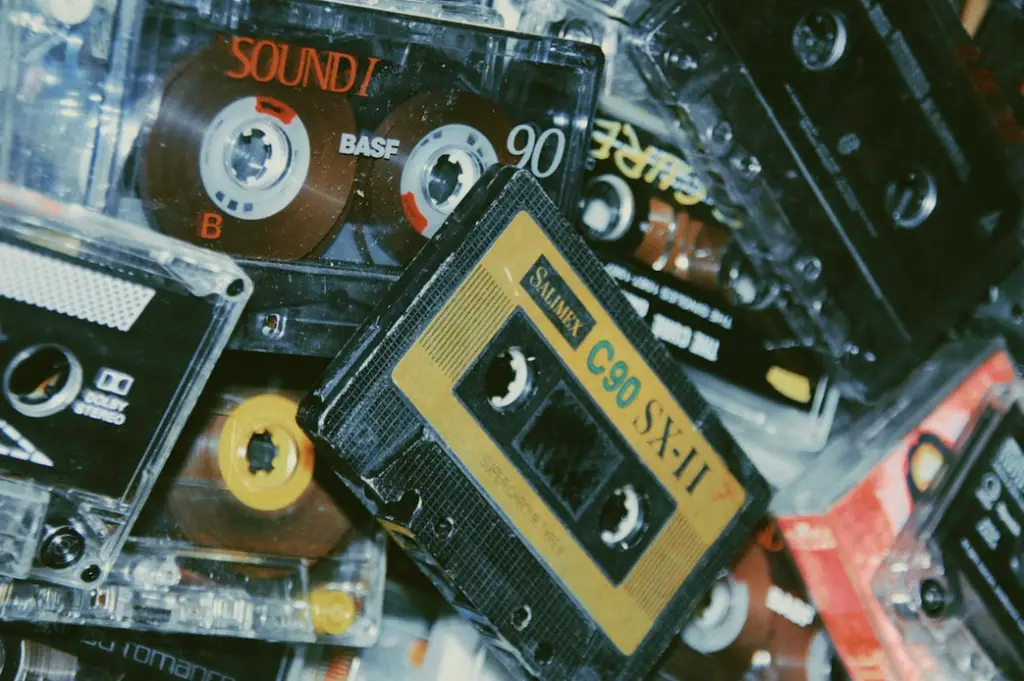
Before streaming and satellite radio, the soundtrack to family adventures came from carefully selected cassettes and, later, burned CDs that accompanied families across state lines. Parents might have their driving music—classic rock, country, or the soundtracks to musicals—while kids might be permitted their own selections for specific portions of the journey. These physical media collections represented hours of preparation, recording songs from the radio or carefully selecting tracks that wouldn’t drive parents to distraction when played on repeat.
The shared musical experience created lasting associations between songs and places, with certain albums forever linked to specific trips or stretches of highway in family memory. Arguments over music selection were as much a part of the road trip experience as the singing along, with volume negotiations and skip requests forming a continuous background conversation to the journey. When favorite tapes stretched from overuse or CDs skipped from dashboard heat, the resulting disappointment could cast a temporary pall over the journey until the next roadside stop offered replacement possibilities.
7. Travel Pillows and Blankets

The back seat traveler’s comfort kit typically included a pillow from home or a special travel pillow designed to make sleeping in a moving vehicle slightly less uncomfortable. These pillows, often bearing drool stains from previous trips, facilitated the road trip parent’s favorite phrase: “Why don’t you try to take a nap?”—the universal solution to boredom, crankiness, and making the miles pass more quickly. Siblings might fight over pillow territory as fiercely as any border dispute, requiring parental diplomacy from the front seat.
Accompanying these pillows were blankets that served multiple purposes: warmth during early morning departures, shade from relentless sun streaming through windows, privacy screens for changing clothes at rest stops, and psychological comfort for children sleeping away from their beds. The smell of these familiar items from home created a sense of security in changing environments, while their presence acknowledged that comfort was an essential component of successful family travel. Parents understood that a sleeping child was the ultimate road trip blessing, worth the trunk space these bulky items required.
8. Wet Wipes and Paper Towels

The cleaning arsenal of pre-travel-size-everything days typically centered around a pack of wet wipes and a roll of paper towels, ready to address everything from sticky hands to major spills. These cleaning supplies were particularly essential in the era before drive-throughs provided napkins with every meal, when roadside picnics meant washing hands with canteen water or finding creative solutions to sauce-covered children. Regular deployment of these wipes maintained some semblance of cleanliness in the increasingly chaotic car environment as miles accumulated.
Parents developed almost supernatural awareness of when sticky substances had contacted car upholstery, reaching blindly into the back seat with a wipe while keeping eyes on the road. The wet wipe package would gradually emerge from under seats during long trips, growing progressively more dried out until only the faintest moisture remained—yet still pressed into service for “emergency cleaning.” These humble cleaning supplies prevented countless arguments about who spilled what and maintained family harmony by quickly addressing the messes inevitable when humans eat, drink, and live in a small moving box for hours on end.
9. Travel Games and Activity Books
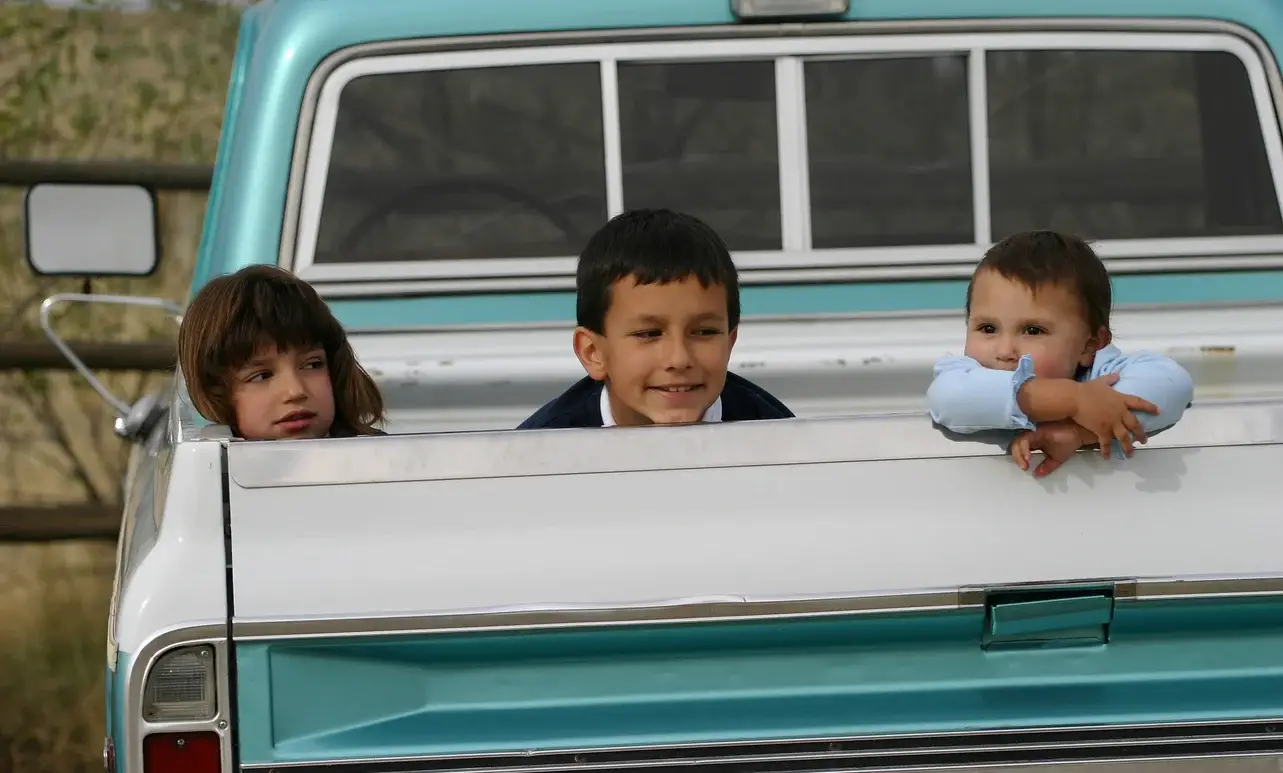
Before tablets and smartphones, backseat entertainment relied on magnetic board games, travel-sized activities, and books specifically designed to prevent the dreaded declaration: “I’m bored.” License plate bingo cards, magnetic checkers with pieces that (theoretically) wouldn’t slide off during turns, and the frustrating perfection of water-filled push-button games kept little hands busy during endless highway stretches. These activities typically enjoyed intense popularity for approximately one hour before being abandoned in favor of staring out windows or asking “How much longer?”
Activity books with their mazes, word searches, and connect-the-dots pages were distributed with great ceremony at journey’s beginning, along with the special treat of new markers or colored pencils. Parents became skilled at stretching these activities, suggesting new ways to use the same materials or inventing verbal games that required no supplies at all. The “I Spy” and alphabet games became default entertainment when all physical options had been exhausted, creating traditions that many families continue even in the digital age—memories of connection that outlasted the frustration of dropped crayons and game pieces lost between seats.
10. Spare Change for Tolls and Pay Phones
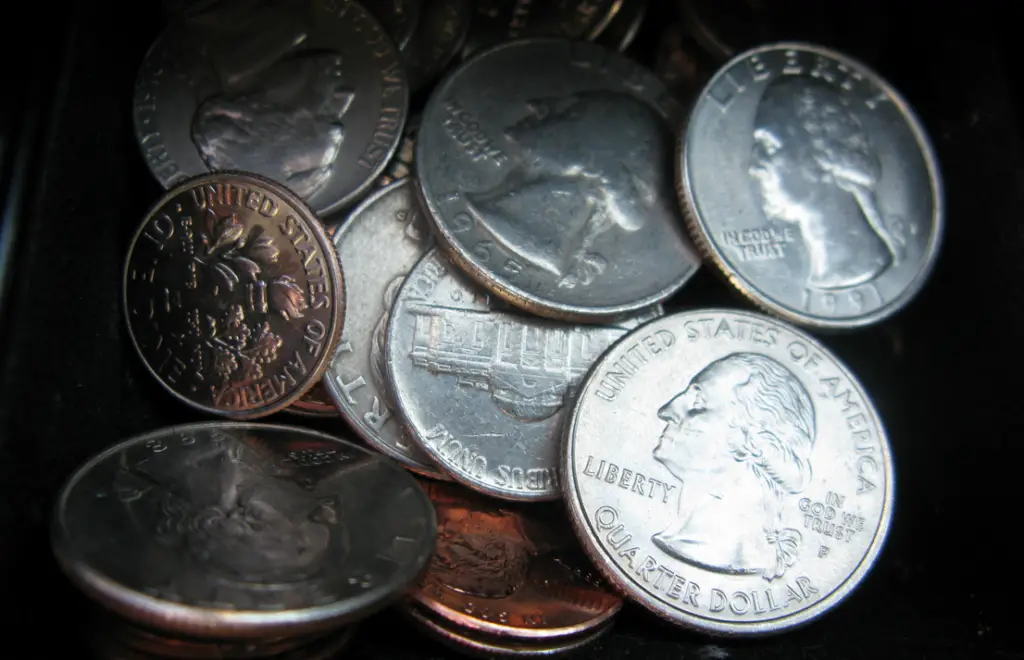
The console coin collection was a carefully maintained fund for unexpected expenses—primarily tolls, but also parking meters, vending machines, and those vibrating motel beds that provided ten minutes of entertainment for a quarter. Crossing certain bridges or entering major cities might require quick access to specific coin denominations, and experienced travelers kept these organized and accessible to avoid the nightmare of holding up toll lines while digging through seat cushions. Children might be entrusted with counting out correct change, a math lesson disguised as an important job.
Equally important was the emergency phone call fund—coins specifically designated for pay phone use if the car broke down miles from help. Parents would remind children that this money was not for candy or souvenirs but for serious situations, part of the safety briefing that established the gravity of being far from home. The presence of this dedicated money acknowledged the vulnerability of travel in pre-cell phone days, when breaking down could mean a long walk to find communication with the outside world. Over time, these coins often migrated to become vacuum-cleaner fodder under seats, requiring periodic replenishment before the next journey.
11. Plastic Bags for Trash (and Emergencies)

The humble plastic grocery bag served as the universal waste management system for family vehicles, typically hung from the gear shift or radio knob until full enough to dispose of at the next gas station. These bags collected apple cores, candy wrappers, emptied juice boxes, and all evidence of the ongoing snacking that accompanied long drives. The presence of the car trash bag represented civilization amid the potential chaos of confined quarters—a small but significant effort to maintain order.
Beyond trash duty, these bags stood ready for their emergency backup role: carsickness receptacles. Parents developed remarkably quick reflexes for deploying these bags at the first mention of queasiness, accompanied by frantic window-rolling and the traditional “look at the horizon, not at your book!” advice. Even rarely used, the knowledge that these bags were available provided psychological comfort to both motion sickness-prone children and parents dreading interior car cleaning. In some especially prepared families, dedicated “just in case” bags of higher quality might be stored specifically for this purpose, their presence both reassuring and slightly ominous.
12. Notebook and Pen for Directions and Memories

Before digital navigation, complicated directions might be transcribed by hand into special notebooks kept in glove compartments or door pockets, ready to guide families through unfamiliar territory. These notebooks captured turn-by-turn guidance from relatives or travel agents, often incorporating landmarks like “the big red barn” or “where the old gas station used to be”—highly subjective reference points that could lead to family disagreements about whether that barn was truly red or merely reddish-brown. The designated reader would announce upcoming turns with varying degrees of timeliness and accuracy, a system that tested both relationships and spatial awareness.
Beyond navigation, these notebooks often evolved into impromptu travel journals where parents (or sometimes children) would record memorable moments, funny sayings, or expenses to be settled upon return. Gas prices in different states, unusual roadside attractions, particularly spectacular tantrums, or quotes from half-asleep passengers might all be preserved in these pages. Years later, discovering these notebooks tucked into forgotten corners of family vehicles would spark memories more vivid than photographs—evidence of journeys measured not just in miles but in experiences collected along the way.
These everyday items, so ordinary in their time, have become artifacts of a different era of travel—one that required more planning, accepted more uncertainty, and perhaps created more shared experiences precisely because entertainment wasn’t individualized through headphones and personal screens. The collection of objects we once considered essential for road safety and sanity reveals how technology has changed not just how we navigate from point A to point B, but how we experience the journey itself. Yet for those who remember sorting through the glove compartment for a state map or rationing the last of the snack bag over endless miles, these items represent more than outdated tools—they’re physical reminders of family adventures, challenges overcome together, and the special bond created when sharing both the monotony and the wonder of the open road.


